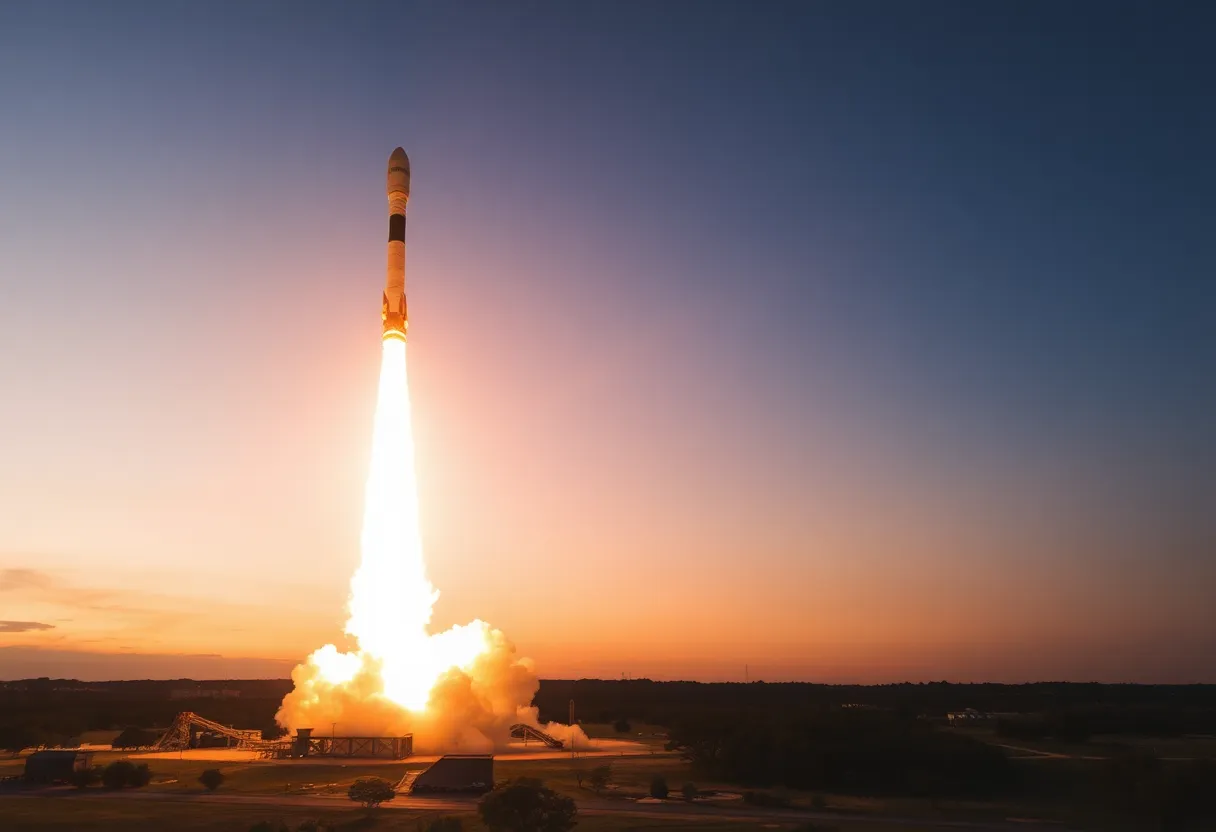

A dramatic representation of the SpaceX Starship explosion during its test flight.
SpaceX’s Starship spacecraft exploded during its eighth test flight, marking a second failure this year. The explosion raised safety protocol concerns and led to FAA intervention due to falling debris affecting air traffic in Florida. While the Super Heavy booster achieved a successful landing, the loss of engines in Starship resulted in a chaotic demise just minutes after launch. SpaceX acknowledges the incident but aims to learn from the mishap as it continues its mission to enhance space exploration technology.
In a spectacular yet unfortunate turn of events, SpaceX’s Starship spacecraft exploded during its eighth test flight on Thursday evening. This marks the second significant failure of the year for the ambitious space venture and has raised eyebrows regarding safety protocols and future missions.
The uncrewed Starship took off from SpaceX’s Starbase facility in South Texas at precisely 5:30 p.m. Central Time (6:30 p.m. Eastern Time). It was hoisted into the sky by the impressive Super Heavy rocket booster, which stands an incredible 232 feet tall (around 71 meters). Just 2 ½ minutes into the mission, the Super Heavy performed a textbook separation from the Starship’s upper stage and successfully landed back within the arms of SpaceX’s iconic launch tower, Mechazilla. This was a significant milestone, marking the booster’s successful landing for the third time.
However, things took a dramatic turn shortly thereafter! Less than ten minutes into the flight, several of Starship’s engines cut out, leading to a chaotic tumble and loss of communication with the ship. The breakdown occurred at a point similar to where the previous test, Flight 7, had met its unfortunate end back in January. The chaos resulted in a massive explosion visible from parts of Florida and across the Caribbean.
Flight safety protocols were immediately put into action. The Federal Aviation Administration (FAA) responded by halting air traffic into Miami, Fort Lauderdale, Palm Beach, and Orlando airports due to “falling space debris” from the explosion. Passengers traveling from Fort Lauderdale/Hollywood and Miami International Airports faced delays of up to 45 minutes while authorities ensured safety in the skies.
SpaceX quickly acknowledged that an energetic event in the aft portion of the spacecraft led to the loss of several crucial Raptor engines. This, in turn, resulted in the loss of attitude control and ultimately, communication with the Starship around nine and a half minutes post-liftoff. Thankfully, any debris from the explosion should have fallen within a designated area, reducing risks for inhabited regions.
No toxic materials were reported in the debris, and experts believe there will be no major impacts on marine life or water quality. However, local residents have begun noticing remnants of the spacecraft’s mishap washing up on beaches and roads in the surrounding areas, prompting local authorities to jump into action and begin cleanup efforts.
This incident raises important questions about FAA oversight. Many are wondering why the agency permitted this launch before completing its investigation into the previous mishap. After all, the investigation of January’s explosion was still ongoing when this latest test flight was approved. Yet, the FAA assured the public that all safety requirements had been met prior to the launch.
SpaceX’s goal for this test flight was not merely to reach orbit but to gather critical data and refine technology, including testing a new satellite delivery system for its Starlink program. The Super Heavy booster showcased numerous enhancements, such as a more advanced flight computer, so there’s still hope that lessons learned from this mishap will lead to improvement.
As SpaceX aims ever higher with plans to send humans and cargo to the Moon and beyond, they are committed to learning from both success and failure. The ultimate objective remains—creating a reliable and robust system for space exploration, making changes where necessary to enhance safety and performance.
While this latest test flight might not have gone as planned, every experience contributes to the growth and evolution of space technology. So, here’s hoping that SpaceX will bounce back and get ready for the next adventure ahead!
News Summary Israel has conducted extensive preemptive strikes against Iran, targeting its nuclear program and…
News Summary The Department of Homeland Security has revoked the work authorization for over 500,000…
News Summary On his 79th birthday, President Trump faces widespread protests known as the 'No…
News Summary Victoria's Secret has shut down its U.S. website due to a security incident,…
News Summary This summer, Atlanta will host free community yoga classes led by Lululemon Ambassador…
News Summary Yasir Felton-Smith, a 5-year-old boy, was safely located after an Amber Alert was…